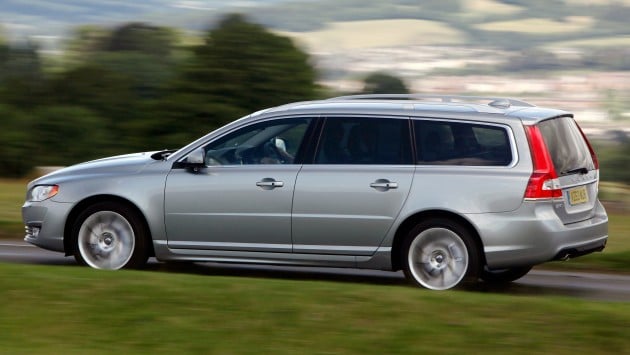
Volvo has announced that it has replaced its entire front-wheel drive engine lineup with new Drive-E turbocharged and direct-injected four-cylinder engines, broadening its range of Euro 6-compliant engines for the 2016 model year.
Sitting at the bottom of the 2016 petrol range is a new 1.5 litre mill – strangely, it's not the three-cylinder engine the company announced it was working on last year, but rather a new four-pot that shares the bigger 2.0 litre's bore, albeit with a much shorter stroke. Available in both 122 hp T2 and 152 hp T3 states of tune, it replaces the previous Ford-sourced 1.6 litre EcoBoost engine.
The engine is mated exclusively to a six-speed Geartronic automatic transmission – when fitted to the V40, both T2 and T3 variants deliver 5.5 litres per 100 km and emit 129 grams per km of CO2. Moving up the range, the mill is available in the S60 and V60 in sole T3 tune and achieves 5.8 litres per 100 km and 135 grams per km (5.9 litres per 100 km and 138 grams per km in the estate).
In these "60-series" cars, buyers who specify a T3 with a six-speed manual will receive a detuned 2.0 litre engine instead of the new 1.5 litre mill, producing the same 152 hp but delivering 5.6 litres per 100 km and CO2 emissions of 131 grams per km on the S60 (5.8 litres per 100 km and 135 grams per km on the V60).

On the diesel side, the existing 2.0 litre engine is now available in 120 hp D2 and 150 hp D3 versions – in the V40, the D2 does 3.6 litres per 100 km and just 94 grams per km of CO2 (3.7 litres per 100 km and 96 grams per km on the Cross Country), while the D3 manages 3.8 litres per 100 km and 99 grams per km. This means that all manual V40 diesels (bar the 190 hp Cross Country D6) slip under the 100 grams per km bracket.
The D2 and D3 also feature on the S60 and V60 – the D2 achieves 3.8 litres per 100 km and emits 99 grams per km of CO2 (101 grams per km on the V60), while the D3 does 3.9 litres per 100 km and 102 grams per km (4.0 litres per 100 km and 105 grams per km on the V60). The new D3 is also on the V70, providing a 14 hp increase and delivering 4.1 litres per 100 km and 108 grams per km on the Business Edition.
Elsewhere in the range, the D4 version in the S60, V60 and XC60 has received a bump in power from 181 hp to 190 hp, essentially bringing it in line with the mill in the V40. All-wheel drive D4 and D5 models in the XC60 retain their five-cylinder engines, but receive a power bump to 190 hp and 220 hp respectively, as well as a 20 gram per km drop in CO2 emissions to 149 grams per km on the auto models.
Rounding out the improvements, the five-cylinder XC70 D4 AWD keeps its 181 hp output but cuts CO2 emissions by 16 grams per km to 153 grams per km, while fuel consumption has been reduced to 5.8 litres per 100 km; the D5 gets a 5 hp boost to 220 hp but retains the D4's emissions and fuel economy figures. Lastly, the V60 Plug-In Hybrid has been renamed the T6 Twin Engine (bringing it in line with the new T8 Twin Engine nomenclature on the XC90) and adds 5 more horsepower, sitting at 220 hp.


No comments:
Post a Comment